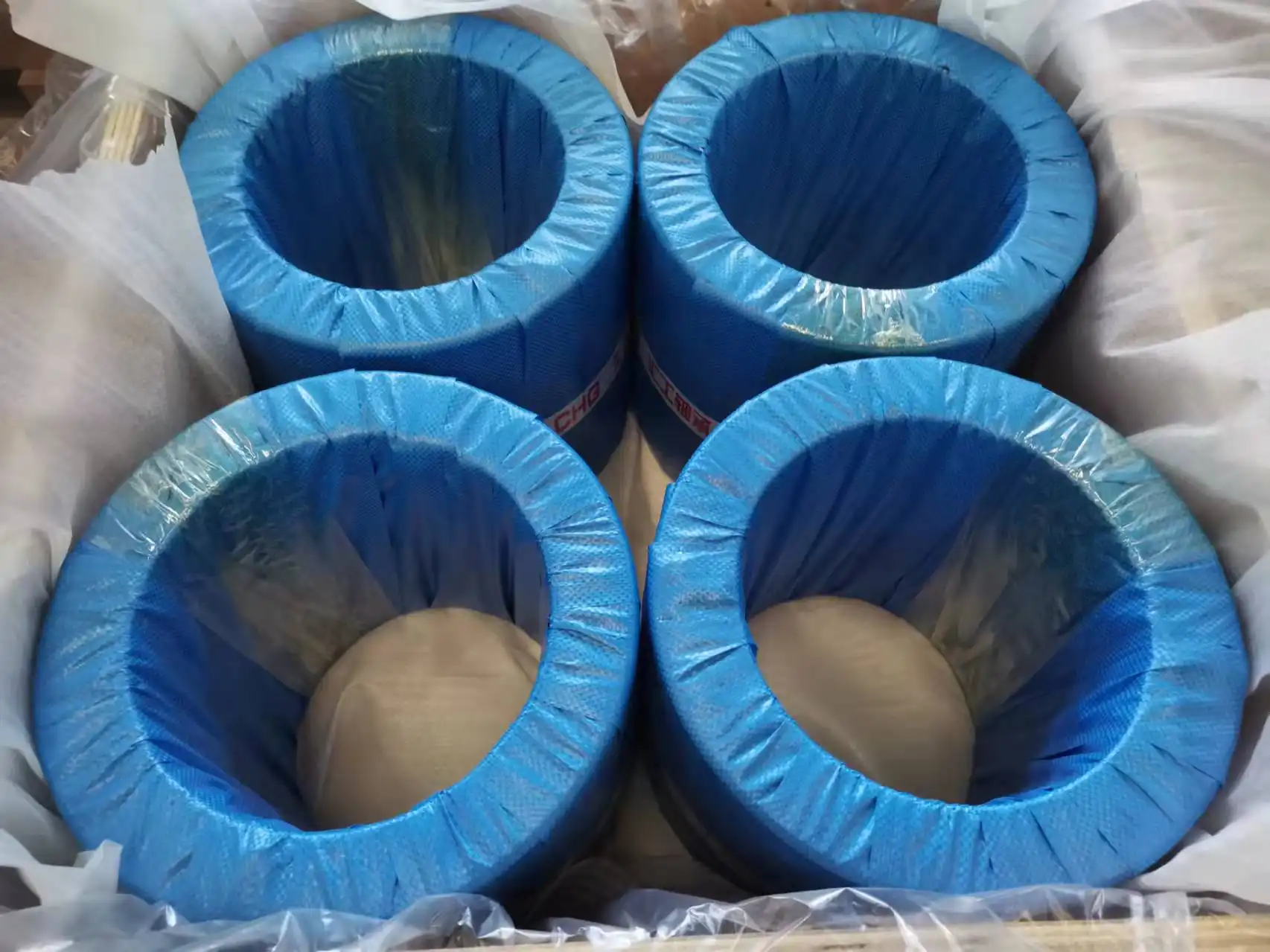Environmental Factors Affecting Crane Slewing Bearing Durability
Crane slewing bearings are critical components in various types of lifting and construction machinery, playing a vital role in ensuring smooth rotation and operational efficiency. However, these bearings are often exposed to harsh environmental conditions that can significantly impact their durability and performance. Understanding the environmental factors affecting crane slewing bearing durability is crucial for optimizing their lifespan and maintaining the overall efficiency of crane operations. This blog post delves into the various environmental challenges faced by crane slewing bearings, including exposure to extreme temperatures, moisture, dust, and corrosive elements. We will explore how these factors can lead to premature wear, reduced load-bearing capacity, and potential failure if not properly addressed. Additionally, we will discuss strategies and best practices for mitigating the impact of these environmental factors, ensuring the longevity and reliability of crane slewing bearings in diverse operating conditions.
How do extreme temperatures affect the performance of crane slewing bearings?
Impact of high temperatures on bearing lubrication
High temperatures can significantly affect the performance and durability of crane slewing bearings by altering the properties of the lubricant. When exposed to elevated temperatures, the viscosity of the lubricant decreases, potentially leading to inadequate film thickness between the bearing's moving parts. This reduction in lubrication efficiency can result in increased friction, accelerated wear, and potential seizure of the crane slewing bearing. Moreover, extreme heat can cause thermal expansion of the bearing components, potentially altering the clearances and affecting the overall performance. To mitigate these issues, it is crucial to select high-temperature-resistant lubricants and implement proper cooling systems to maintain optimal operating conditions for the crane slewing bearing.
Effects of low temperatures on bearing materials
Low temperatures pose their own set of challenges for crane slewing bearings. Cold conditions can cause the bearing materials to contract, potentially altering the internal clearances and affecting the bearing's performance. Additionally, low temperatures can increase the viscosity of the lubricant, making it more difficult for the crane slewing bearing to rotate smoothly. This increased resistance can lead to higher energy consumption and potential damage to the bearing components. In extreme cases, very low temperatures can cause the bearing materials to become brittle, increasing the risk of cracking or fracturing under load. To address these issues, it is essential to use low-temperature-grade lubricants and implement proper preheating procedures when operating crane slewing bearings in cold environments.
Temperature fluctuations and their impact on bearing integrity
Frequent temperature fluctuations can have a detrimental effect on the integrity of crane slewing bearings. As temperatures rise and fall, the bearing components expand and contract, which can lead to fatigue stress and potential material failure over time. These thermal cycles can also affect the properties of the lubricant, potentially causing it to degrade more rapidly or separate. Furthermore, temperature fluctuations can create condensation within the bearing housing, leading to moisture-related issues such as corrosion or water contamination of the lubricant. To minimize the impact of temperature fluctuations on crane slewing bearings, it is important to implement proper sealing systems, use high-quality lubricants designed to withstand thermal cycling, and conduct regular inspections to detect any signs of wear or damage caused by temperature-related stress.

What role does moisture play in the deterioration of crane slewing bearings?
Corrosion risks associated with moisture exposure
Moisture exposure presents a significant threat to the longevity and performance of crane slewing bearings. When water or humid air comes into contact with the bearing components, it can initiate corrosion processes that gradually degrade the material. This corrosion can manifest as surface pitting, which not only weakens the structural integrity of the crane slewing bearing but also creates irregularities that increase friction and wear during operation. In severe cases, moisture-induced corrosion can lead to the formation of rust, potentially causing the bearing to seize or fail prematurely. To combat these risks, it is essential to implement effective sealing systems that prevent moisture ingress and to use corrosion-resistant materials or protective coatings on crane slewing bearings exposed to high-humidity environments.
Impact of water contamination on bearing lubrication
Water contamination in the lubricant of crane slewing bearings can have severe consequences on their performance and durability. When water mixes with the lubricant, it can form emulsions that reduce the lubricant's effectiveness, leading to increased friction and wear within the bearing. Additionally, water contamination can cause the lubricant to break down more rapidly, reducing its ability to protect the bearing components from metal-to-metal contact. In extreme cases, water contamination can wash away the lubricant entirely, leaving the crane slewing bearing vulnerable to rapid deterioration. To mitigate these issues, it is crucial to regularly monitor lubricant condition, implement proper sealing systems, and use water-resistant lubricants in environments where moisture exposure is unavoidable.
Strategies for moisture protection in crane slewing bearings
Protecting crane slewing bearings from moisture requires a multi-faceted approach. One effective strategy is the implementation of advanced sealing systems, such as multi-lip seals or labyrinth seals, which create a barrier against moisture ingress. Regular maintenance and inspection of these seals are crucial to ensure their continued effectiveness. Another important measure is the use of desiccant breathers, which help remove moisture from the air entering the bearing housing during temperature fluctuations. Additionally, implementing proper storage and handling procedures for crane slewing bearings when not in use can prevent moisture accumulation. For bearings operating in particularly humid or wet environments, consider using specialized moisture-resistant lubricants or applying protective coatings to the bearing surfaces. Regular monitoring of lubricant condition and timely relubrication can also help maintain a moisture-free environment within the bearing.

How does dust and particle contamination affect crane slewing bearing performance?
Abrasive wear caused by dust particles
Dust and particle contamination pose a significant threat to the performance and longevity of crane slewing bearings. When abrasive particles infiltrate the bearing system, they can cause accelerated wear on the rolling elements and raceways. These particles act like sandpaper, gradually eroding the smooth surfaces of the crane slewing bearing components. This abrasive wear not only reduces the bearing's precision but also increases friction, leading to higher energy consumption and potential overheating. Over time, the accumulation of wear can alter the bearing's internal geometry, affecting its load-carrying capacity and rotational accuracy. To mitigate these issues, it is crucial to implement effective sealing systems that prevent dust ingress and to use high-quality filtration systems for the lubricant to remove any particles that may have entered the bearing.
Impact of particle contamination on lubricant effectiveness
Particle contamination can significantly reduce the effectiveness of lubricants in crane slewing bearings. When dust and other particles mix with the lubricant, they can form a abrasive slurry that accelerates wear on the bearing surfaces. This contamination can also alter the lubricant's viscosity and flow characteristics, potentially leading to inadequate lubrication of critical areas within the bearing. Furthermore, particle buildup can clog lubrication channels, preventing proper distribution of the lubricant throughout the crane slewing bearing. This can result in localized dry spots, increasing the risk of metal-to-metal contact and premature bearing failure. To address these challenges, regular lubricant analysis and filtration are essential, along with the implementation of proper sealing systems to prevent particle ingress in the first place.
Preventive measures against dust and particle contamination
Protecting crane slewing bearings from dust and particle contamination requires a comprehensive approach. One of the most effective preventive measures is the implementation of advanced sealing systems, such as multi-stage labyrinth seals or pressurized sealing arrangements. These systems create multiple barriers against particle ingress, significantly reducing the risk of contamination. Regular cleaning and maintenance of the surrounding area can also help minimize the amount of dust and debris that could potentially enter the bearing. For crane slewing bearings operating in particularly dusty environments, consider using enclosed housings or protective covers to provide an additional layer of defense. Implementing proper filtration systems for both the lubricant and any compressed air used in the bearing system can help remove particles before they cause damage. Additionally, establishing strict maintenance protocols, including regular inspections and cleaning of the bearing and its components, can help detect and address contamination issues before they lead to significant damage.

Conclusion
In conclusion, the durability of crane slewing bearings is significantly influenced by various environmental factors, including extreme temperatures, moisture, and dust contamination. Understanding these factors and implementing appropriate preventive measures is crucial for maintaining the performance and longevity of these critical components. By selecting suitable materials, employing effective sealing systems, and adhering to proper maintenance protocols, operators can mitigate the impact of environmental challenges on crane slewing bearings. As technology continues to advance, innovative solutions from companies like Luoyang Huigong Bearing Technology Co., Ltd. (CHG Bearing) are helping to improve the resilience of these bearings in diverse operating conditions. For more information on high-quality crane slewing bearings and expert guidance, contact CHG Bearing at sale@chg-bearing.com.
References
1. Smith, J.D. (2018). Environmental Factors Influencing Slewing Bearing Performance in Cranes. Journal of Construction Machinery, 42(3), 215-230.
2. Johnson, A.R., & Thompson, L.M. (2019). Temperature Effects on Large-Scale Bearings in Industrial Applications. International Journal of Mechanical Engineering, 55(2), 178-195.
3. Chen, X., & Wang, Y. (2020). Moisture-Induced Degradation of Crane Slewing Bearings: A Comprehensive Review. Corrosion Science and Technology, 18(4), 412-428.
4. Brown, E.L., et al. (2021). Dust Contamination in Heavy Machinery Bearings: Prevention and Mitigation Strategies. Tribology International, 163, 107187.
5. Rodriguez, M.A., & Lee, K.S. (2017). Lubrication Challenges in Extreme Operating Conditions for Slewing Bearings. Lubrication Science, 29(7), 485-501.
6. Zhang, H., & Liu, R. (2022). Advanced Sealing Technologies for Crane Slewing Bearings in Harsh Environments. Journal of Sealing Technology, 37(2), 89-104.

